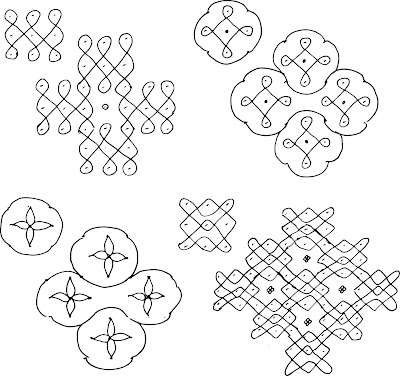KOLAM FOR RATHASAPTHAMI DAY (16th/17th Feb 2013)
(Surya Jayanthi)
The above Kolam is apt for the above occasion.
As anybody can observe, it is in four parts: the dome, side
supports, the image of Surya in the middle and the base with wheel.
The image of Surya is drawn without any dots and can be
easily drawn.
The dome starts with single dot (idukku pulli) and goes up
to 12. The sides are are with 3 dots
throughout.
The base is drawn with 17 dots.
The base wheel is again drawn without dot.
The whole image represents Lord Surya travelling in a
chariot.
The entire design can be varied according to one’s taste and
imagination.
The same Kolam can be used on Makara Sankaranthi (Pongal)
day.
By the way Ratha Sapthami, as the heading indicates, is the
Jayanthi day of Lord Surya.
Ratha Sapthami is symbolic of the change of season to spring
and the start of the harvesting season
Worshipping Lord Surya on this day is the tradition for a
long time in South India.
This year the Ratha Sapthami falls on 16th Feb in North America & 17th Feb. in India.
It will be interesting to note here that some Temples in
South India do Surya Pooja during this period ending with Ratha Sapthami. Also, it will be interesting to note that
during this period, the rays of Surya will fall on the Lord Shiva in the
sanctum Sanctorum in some temples, which is an architectural marvel to watch.
I know for sure that this happens at Thirumeyachur, near
Peralam (in the bus/train route between Mayiladuthurai & Nannilam). This is the famous temple where there is the
sannadhi for Shri Lalithambigai. Surya
Pooja at this temple is very famous. So
next time when you happen to travel that side, don’t miss this temple and be
the recipient of the blessings of Lord Meganathar & Goddess Lalithambigai.
Prayer to Lord Surya not only gives of good health but also knowledge. Lord Hanuman gained all his Vidya from Surya,
so say the Puranas. Let us pray to Lord
Surya to bestow us with health and Vidya on this auspicious day.











